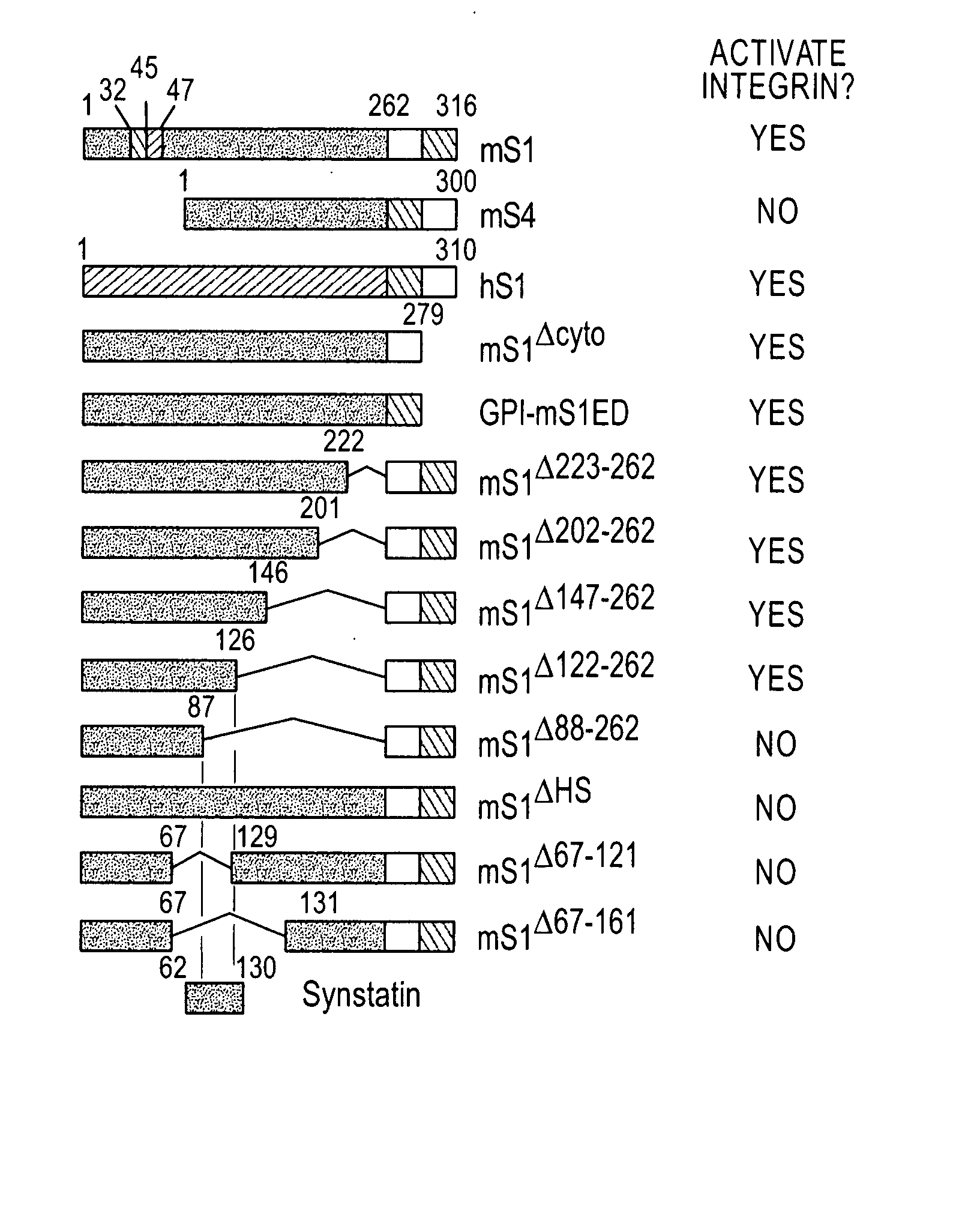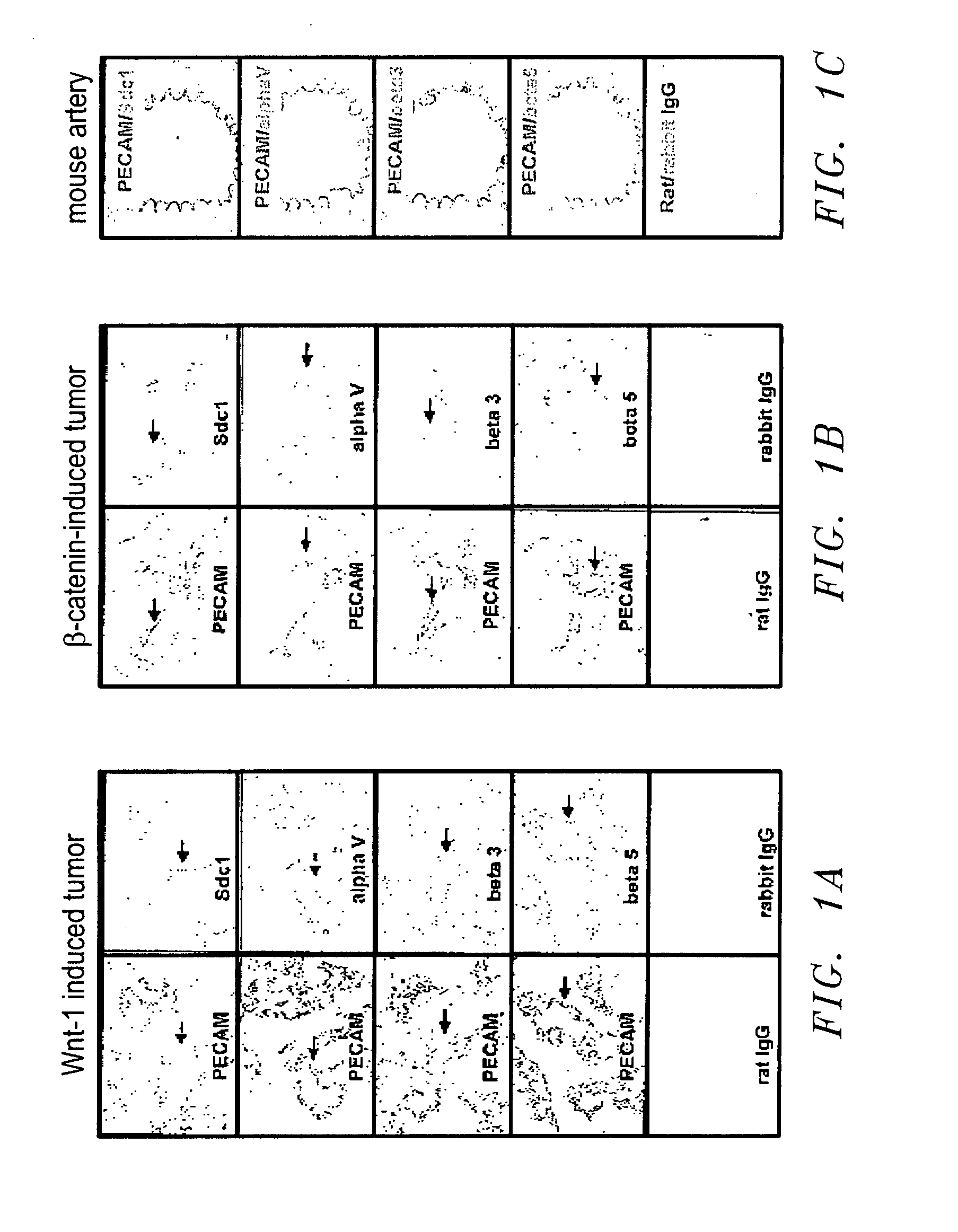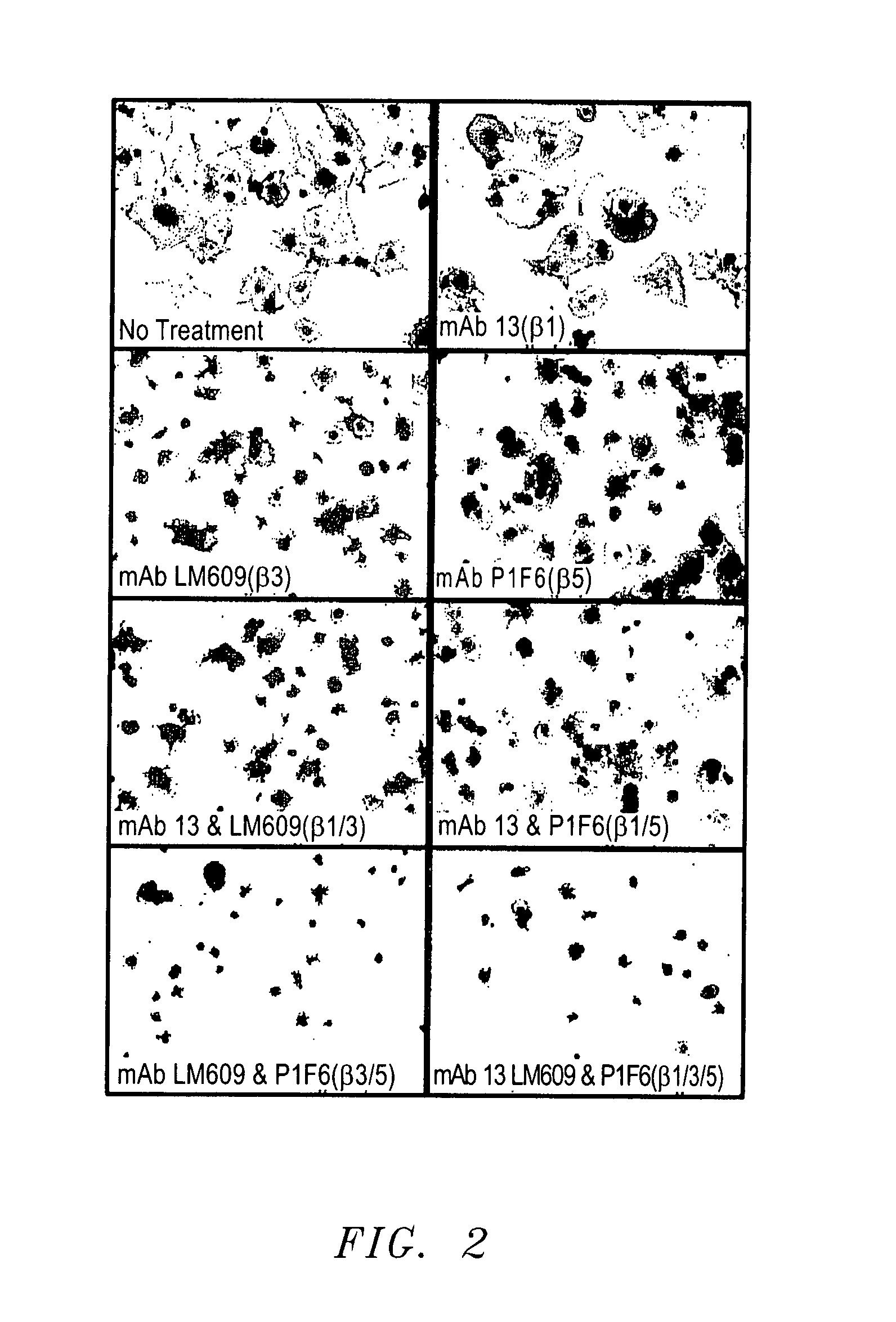Peptides of Syndecan-1 For Inhibiting Angiogenesis
- Summary
- Abstract
- Description
- Claims
- Application Information
AI Technical Summary
Benefits of technology
Problems solved by technology
Method used
Image
Examples
example 1
Materials and Methods
[0168] Cells. Human dermal microvascular endothelial cells (HMEC-1) and human aortic endothelial cells (HAEC) were grown in endothelial cell growth medium supplemented with 10% FBS serum. B82L mouse fibroblasts and human mammary carcinoma MDA-MB-231 cells were cultured in Dulbecco's Modified Eagle's medium supplemented with 10% FBS (Beauvais and Rapraeger, 2003; Beauvais et al., 2004; McQuade et al., 2006).
[0169] Recombinant mScd-1ED and synstatin82-130 inhibitors. A GST fusion protein consisting of the mScd-1ED (amino acids 18-251) was used as a competitor in cell adhesion studies (Beauvais and Rapraeger, 2003; McFall and Rapraeger, 1998). The protein was expressed in bacteria and purified on a glutathione affinity column as described in previous publications (Beauvais and Rapraeger, 2003; McFall and Rapraeger, 1998). Synstatin82-130 peptide represents amino acids 82-130 of mouse Sdc-1. The peptide was synthesized and purified to 75% purity by GenScript Corpo...
example 2
Results
[0174] Regulation of αvβ3 and αvβ5 integrin activity on endothelial cells by recombinant syndecan-1 ectodomain. There has not been a concerted examination of Sdc-1 expression in vascular endothelium. Most reports suggest that it is expressed poorly or not at all on resting, mature vascular endothelium that line blood vessels. However, there are reports that it is expressed on activated endothelial cells participating in angiogenesis in the wounded skin (Elenius et al., 1991; gallo et al., 1996). Sdc-1 is not expressed in endothelial cells lining the rabbit aorta, but expression is upregulated following balloon catheter injury and persists for up to 12 weeks following injury. There is a report that Sdc-1 is upregulated in a subset of vessels during tumor angiogenesis (Gotte et al., 2002). These studies strongly suggest that Sdc-1 becomes expressed on activated cells responding to injury or growth factors. Cultured cells, such as human aortic and human umbilical vein endotheli...
example 3
[0187] Introduction. Angiogenesis, or the sprouting of new blood vessels from existing ones, occurs in development and in diseases such as diabetic retinopathy, endometriosis, and tumor-induced angiogenesis. The mature, resting endothelial cells in the donor vessels are activated to progress through an angiogenic program, in which they undergo proliferation and invasion, maturation, and apoptosis; the latter, also known as “vascular pruning” is especially important in molding the architecture of the new vessels (Bergers and Benjamin, 2003; Stupack and Cheresh, 2003).
[0188] FGF and VEGF, two growth factors often released by tumors, are potent angiogenic factors. Their activities are closely tied to the activity of two integrins, the αvβ3 and αvβ5 integrins (Stupack and Cheresh, 2003), which have roles in the chemotactic migration and in the survival of the endothelial cells. The expression of these two integrins is induced by FGF and VEGF signaling and the integrins and growth facto...
PUM
| Property | Measurement | Unit |
|---|---|---|
| Length | aaaaa | aaaaa |
| Inhibition | aaaaa | aaaaa |
Abstract
Description
Claims
Application Information
 Login to View More
Login to View More - R&D
- Intellectual Property
- Life Sciences
- Materials
- Tech Scout
- Unparalleled Data Quality
- Higher Quality Content
- 60% Fewer Hallucinations
Browse by: Latest US Patents, China's latest patents, Technical Efficacy Thesaurus, Application Domain, Technology Topic, Popular Technical Reports.
© 2025 PatSnap. All rights reserved.Legal|Privacy policy|Modern Slavery Act Transparency Statement|Sitemap|About US| Contact US: help@patsnap.com



